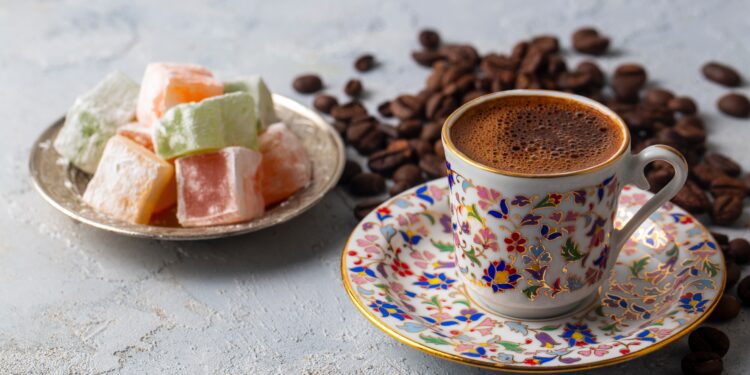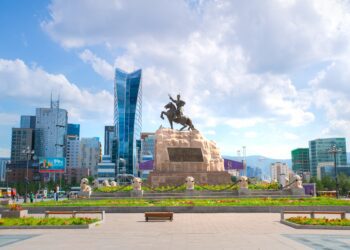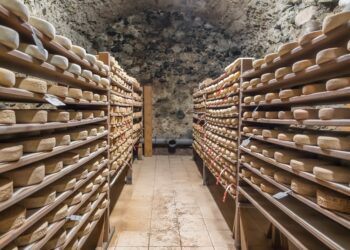Calling Turkish coffee “just a drink” undersells it. It’s a ritual, a conversation and, as arguably the ancestor of all modern coffees, it’s a nearly 500-year-old piece of history, inscribed by UNESCO on its intangible cultural heritage of humanity list.
Coffee’s roots go back even further. Lani Kingston, adjunct professor at Portland State University, says a single coffee bean dating from the 12th century has been found at an archaeological site in the United Arab Emirates. By 1350, coffee-serving paraphernalia appeared in Turkey, Egypt and Persia.
The story of Turkish coffee begins not in Turkey, but in Yemen. In the 15th century, Sufi mystics are said to have consumed it to stay awake during long nights of prayer and devotions. When Sultan Süleyman, known in Europe as Süleyman the Magnificent, seized Yemen in 1538, coffee made its way into the Ottoman Empire. Within a year, the beans had reached Constantinople — the ancient city that is now Istanbul.
In 1539, the Ottoman admiral Hayreddin Barbarossa registered a property that included a “kahve odası,” or coffee room, according to Cemal Kafadar, Harvard professor and author of an academic paper about coffee: “How Dark is the History of the Night, How Black the Story of Coffee, How Bitter the Tale of Love: The Changing Measure of Leisure and Pleasure in Early Modern Istanbul.”
By the 1550s, the first “kahvehanes,” or coffeehouses were appearing in İstanbul, chronicled by historian İbrahim Peçevi in his book, “History of Peçevi.” The beverage’s new popularity quickly reshaped cultural life. The Ottoman cezve-ibrik method of preparing coffee — shared with Greece and rooted in Ethiopia — became the hallmark of traditional Turkish coffee. As gastronomy researcher Merin Severexplains, the fundamental difference between Turkish and other coffees is that cezve-ibrik is essentially cooking; it’s not brewed, but “cooked” in water like a soup, producing an unfiltered drink.
Coffeehouses stirred controversy. Religious scholars and political leaders across Asia and Europe viewed them as places for subversive activities and idle chatter. Mecca’s governor, Hayır Bey, banned coffee in the city in 1511, an edict that would last 13 years, due to concern it would lead to radical ideas. Ottoman sultans repeatedly shut down cafes over similar fears. They never completely vanished though. Even in 17th-century England, Charles II tried to shut them, suspecting “anti-royalist sedition and treasonous conversation is happening in those coffee shops,” says London tour guide Chris MacNeil.
Reading the tea leaves (in the coffee grounds)
Turkish coffee is “more than a beverage,” says Seden Doğan, assistant professor of instruction at the University of South Florida and a native of Safranbolu, in northern Turkey. Doğan calls it a “bridge” that facilitates sharing — both in sorrow or joy.
Today, coffee is the unofficial catch-up drink in Turkey. As in many countries, when two friends who have been apart for a while want to have a chat, they say, “Let’s have coffee.” In Turkey, that means something more specific: “Come over and I’ll make you a cup of Turkish coffee.”
The preparation ritual is precise and meticulous, involving a small, long-handled pot called a cezve placed over heat, preferably hot coals or sand. The finest coffee grounds are cooked slowly to release a rich flavor and create a beautiful top layer of foam, considered a mark of quality.
Coffee etiquette is equally important. Although served in small cups, it’s to be drunk calmly and slowly, not rushed like an espresso. This gives the grounds time to settle and keeps them at the bottom of the cup.
When the cup is empty, it’s time for the ritual of tasseography, or coffee-cup reading. The cup is inverted onto its saucer, left to cool and then shapes and symbols perceived in the leftover grounds are “read” for meaning. These are mostly made up on the fly, but a fish typically means luck; a bird indicates a journey.
While fortune-telling is generally discouraged in Islamic culture, coffee-cup reading is viewed as a “playful, symbolic interpretation” and a “communal ritual,” says Kylie Holmes, author of “The Ancient Art of Tasseography.”












